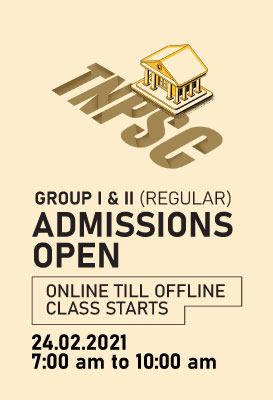PREVIOUS
SDG Goal wise programs of India (SDG 9) – Part 29
SDG Goal wise programs of India (SDG 9) – Part 29
(இதன் தமிழ் வடிவத்திற்கு இங்கே சொடுக்கவும்)
Major initiatives under the Digital India program (Continuation)
4. National e-Governance Plan (NeGP)
Launched Year:
- 2006.
Ministry/Nodal Agency:
- Ministry of Electronics and Information Technology (MeitY).
Objectives:
- To promote and enhance e-governance across India.
- To improve service delivery through IT-enabled systems.
Beneficiaries:
- Citizens, government employees, and businesses.
Eligibility Criteria:
- Open to all citizens accessing government services.
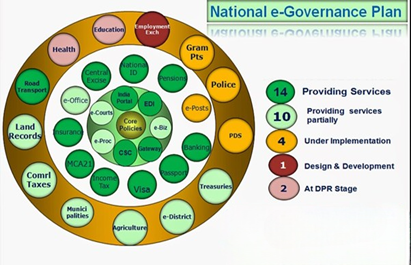
Benefits:
- Improved transparency, efficiency, and accountability in government service delivery.
- Online access to government services and information.
- Reduction in corruption and delays in public service delivery.
Additional Information:
- This plan involves several sub-components like e-District, State Data Centers, and e-Office.
5. Arogya Setu App
Launched Year:
- 2020.
Ministry/Nodal Agency:
- Ministry of Electronics and Information Technology (MeitY).
Objectives:
- To track and trace COVID-19 infections and prevent the spread of the virus.
- To help citizens assess their risk levels and follow safety protocols.
Beneficiaries:
- General public, particularly during the COVID-19 pandemic.
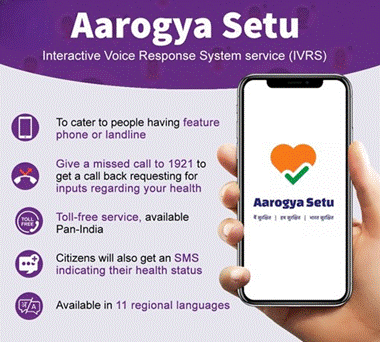
Eligibility Criteria:
- Open to all smartphone users.
Benefits:
- Helps identify proximity to infected individuals and notify users of potential exposure.
- Provides self-assessment tools and COVID-19 updates.
- Facilitates contact tracing and improves public health responses.
Additional Information:
- Over 100 million installs within 40 days of launch.
- Praised by the World Health Organization for its effectiveness in containing the pandemic.
6. e-NAM (National Agriculture Market)
Launched Year:
- 2016.
Ministry/Nodal Agency:
- Ministry of Agriculture & Farmers Welfare.
Objectives:
- To create a unified national market for agricultural commodities.
- To connect farmers with buyers across India via an online platform.
Beneficiaries:
- Farmers, traders, consumers.
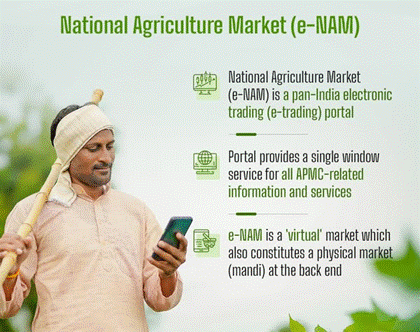
Eligibility Criteria:
- Farmers and traders registered with APMCs.
Benefits:
- Transparent pricing and fair trade for agricultural products.
- Increased market reach for farmers and better price discovery.
- Reduction in the role of intermediaries.
Additional Information:
- The platform connects over 1,000 mandis across India.
- Offers digital payment and quality assurance mechanisms.
7. e-Sanjeevani
Launched Year:
- 2020.
Ministry/Nodal Agency:
- Ministry of Health and Family Welfare.
Objectives:
- To provide telemedicine services to rural and remote areas.
- To bridge the healthcare gap by offering virtual consultations.
- Beneficiaries:
- Rural and underserved populations, healthcare providers.
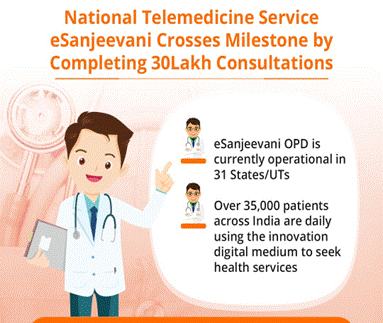
Eligibility Criteria:
- Patients in remote areas requiring medical consultations.
Benefits:
- Over 9 lakh online consultations by 2020.
- Bridges the healthcare divide between urban and rural areas.
- Improves access to healthcare in underserved regions.
Additional Information:
- Part of India’s efforts to expand telemedicine and improve healthcare services.
8. MyGov
Launched Year:
- 2014.
Ministry/Nodal Agency:
- Ministry of Electronics and Information Technology (MeitY).
Objectives:
- To engage citizens in the governance process.
- To provide a platform for direct interaction with the government.
Beneficiaries:
- Indian citizens.
Eligibility Criteria:
- Any Indian citizen with internet access.
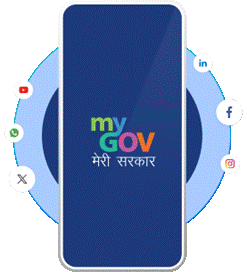
Benefits:
- Allows citizens to participate in discussions, provide suggestions, and contribute to policy-making.
- Facilitates citizen feedback on government policies and initiatives.
Additional Information:
- Played a key role during the COVID-19 crisis in mapping shelter homes and distributing food.
9. DIKSHA App
Launched Year:
- 2017.
Ministry/Nodal Agency:
- Ministry of Education.
Objectives:
- To provide digital educational resources for students and teachers.
- To enhance the quality of education through technology.
Beneficiaries:
- Students, teachers, and educational institutions.
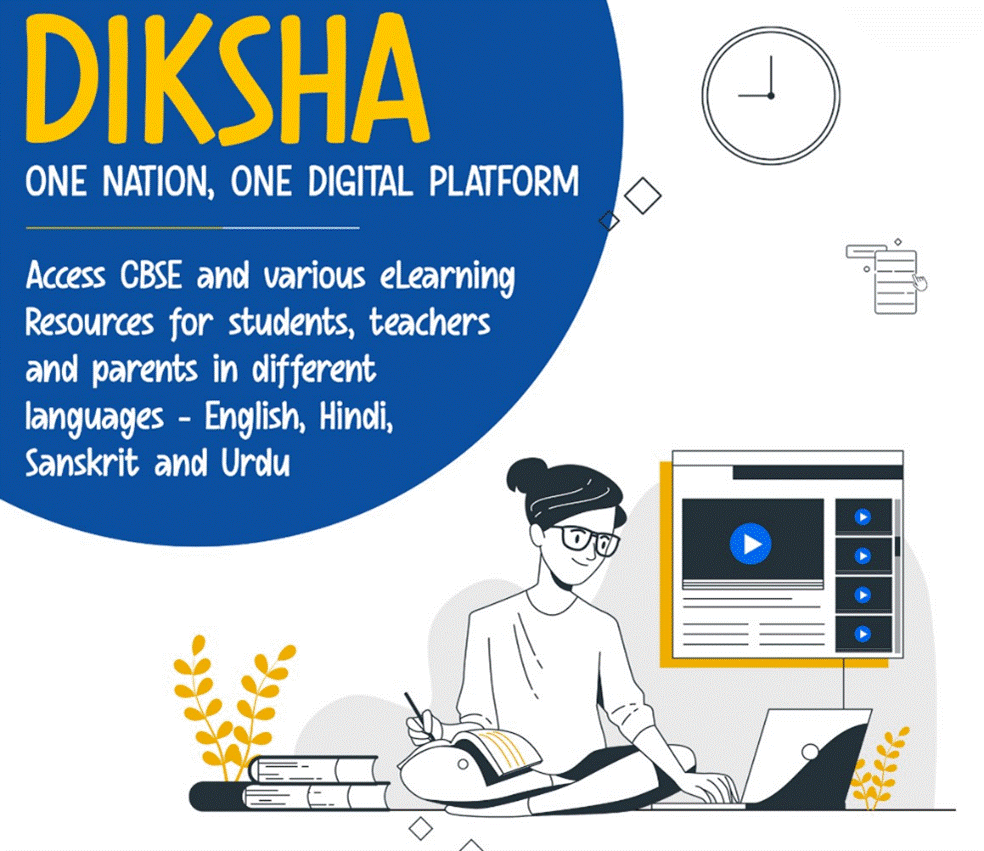
Eligibility Criteria:
- Open to all students and teachers in India.
Benefits:
- Provides access to textbooks, learning resources, and teacher training modules.
- Facilitates remote learning, especially during the COVID-19 pandemic.
- Supports mental health and inclusive education.
Additional Information:
- Available as an app and website, offering courses for different educational boards.
PM Gati Shakti National Master Plan (NMP)
Launched Year:
- October 13, 2021.
Ministry or Nodal Agency:
- The Department for Promotion of Industry and Internal Trade (DPIIT) under the Ministry of Commerce and Industry.
Objectives:
- To ensure integrated planning and coordinated execution of infrastructure projects across different Ministries.
- To provide seamless connectivity for the movement of people, goods, and services.
- To enhance last-mile connectivity and reduce travel time, thus improving economic efficiency.
- To streamline infrastructure planning through better data-sharing and coordination between central and state authorities.
- To optimize infrastructure utilization and reduce inefficiencies.
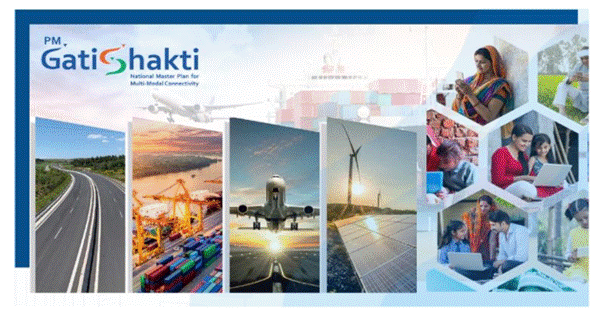
Beneficiaries:
- Various Ministries and State Governments (44 Central Ministries and 36 States/UTs are involved).
- Industries and businesses that rely on infrastructure for the movement of goods and services.
- Citizens who benefit from improved connectivity, faster transportation, and better access to services.
- Local governments, district authorities, and ministries involved in infrastructure development.
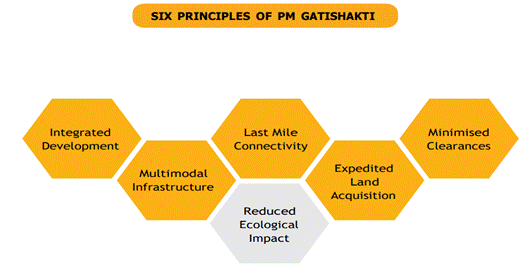
Eligibility Criteria:
- The initiative is aimed at both government and private stakeholders who are part of infrastructure development.
- There is no specific eligibility required for citizens but they benefit from the enhanced connectivity and infrastructure.
Benefits:
- Improved Connectivity: The initiative ensures smooth inter-modal transportation, including roads, railways, ports, and airports.
- Faster Execution of Infrastructure Projects: By involving multiple stakeholders and using a centralized data platform, project timelines are shortened.
- Cost Optimization: The plan aids in selecting the most efficient and cost-effective routes and methods for infrastructure projects.
- Enhanced Coordination: Ministries and departments can work together with reduced delays by synchronizing their efforts.
- Better Data Availability: Real-time data and GIS-based spatial planning tools enable accurate decision-making.
- District-Level Planning: The creation of District Master Plan (DMP) portals allows local authorities to identify infrastructure gaps and plan more effectively.
- Reduction in Bureaucratic Delays: By simplifying processes like Right of Way (RoW) approvals and providing a digital platform for monitoring, delays in project execution are minimized.
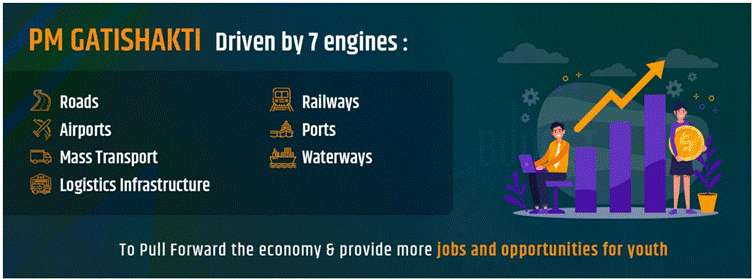
Additional Information:
- PM Gati Shakti is based on six pillars:
Comprehensiveness
- It will include all the existing and planned initiatives of various Ministries and Departments into one centralized portal.
- Each department will have visibility of each other's activities, providing critical data for better planning and execution of projects in a comprehensive manner.
Optimization
- The National Master Plan will assist ministries in identifying critical gaps and planning projects accordingly.
- It will help in selecting the most optimum routes for transportation, considering time and cost efficiency.
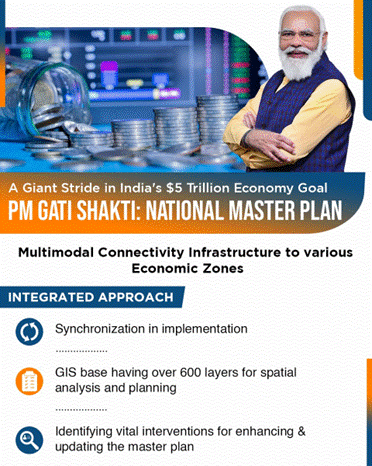
Synchronization
- PM Gati Shakti will help synchronize activities across individual Ministries and Departments, which often work in isolation.
- By ensuring coordination across various layers of governance, it will reduce delays and improve project execution.
Analytical
- The plan will provide centralized access to data through GIS-based spatial planning and analytical tools.
- Over 200 data layers will enable better visibility for the executing agencies, allowing them to make more informed decisions.
Dynamic
- Ministries and Departments will be able to visualize, review, and monitor the progress of cross-sectoral projects via the GIS platform.
- Satellite imagery will provide on-ground progress updates periodically, and project progress will be regularly updated on the portal.
- This dynamic approach will help in identifying necessary interventions to continually enhance and update the master plan.
- The PM Gati Shakti National Master Plan integrates various ongoing and planned infrastructure schemes such as Bharatmala, Sagarmala, UDAN, and others.
- The initiative has integrated 1,614 data layers.
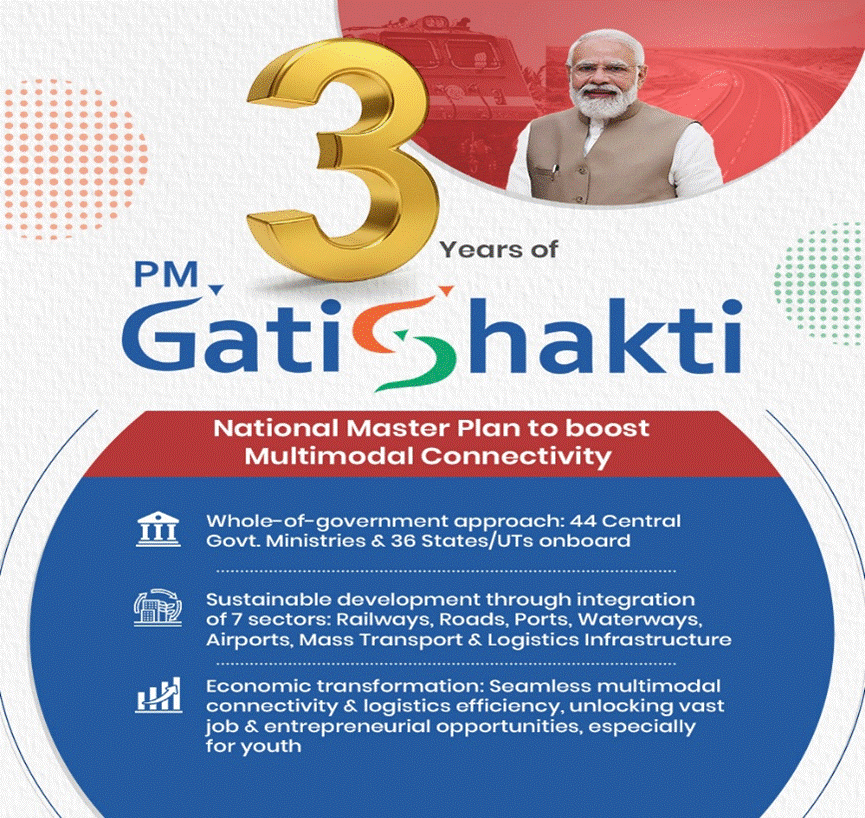
- It has been actively implemented in multiple sectors, including:
- Road transport
- Railways
- Petroleum
- Health
- Education
- Disaster management.
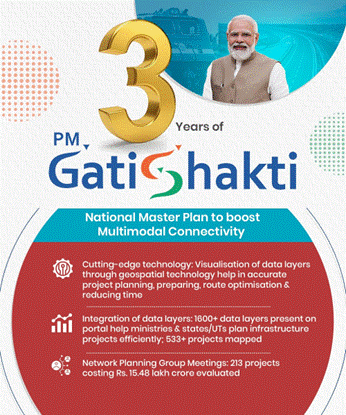
- The ‘Gati Shakti Sanchar’ portal was launched in 2022.
- The portal aims to speed up telecom infrastructure rollout by facilitating centralized Right of Way (RoW) approvals.
- The portal is designed for Telecom Service Providers, Internet Service Providers, and others.
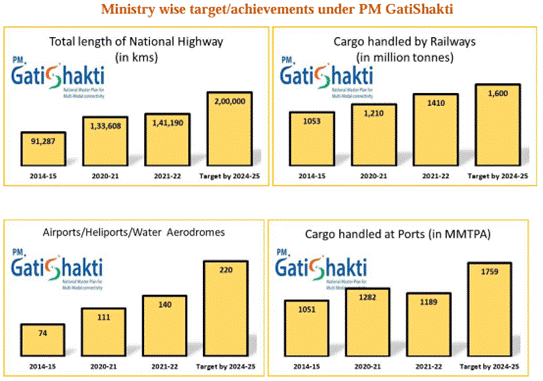
National Logistics Policy (NLP) 2022: Progress and Key Initiatives
- Launch Date:
- 17th September 2022.
- Main Objective:
- To boost India’s economic growth by creating an integrated, efficient, and cost-effective logistics network.
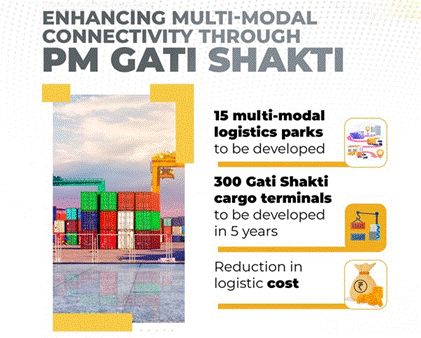
- Key Goals:
- Reduce logistics costs.
- Improve India's Logistics Performance Index (LPI) ranking to be among the top 25 countries by 2030.
- Promote data-driven decision-making for better logistics management.
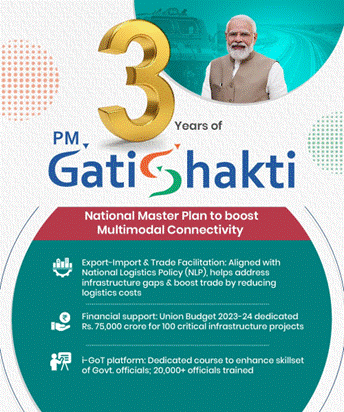
Comprehensive Logistics Action Plan (CLAP)
- Implementation Framework: CLAP drives the policy's implementation.
Focus Areas:
- Digital Logistics Systems: Development of integrated digital solutions for logistics.
- Asset Standardization: Ensuring standardization of logistics-related assets for efficiency.
- Human Resource Development: Training and capacity-building for the logistics workforce.
- State Engagement: Collaborating with state governments to align logistics policies at the regional level.
- EXIM Logistics: Strengthening logistics for export-import (EXIM) trade.
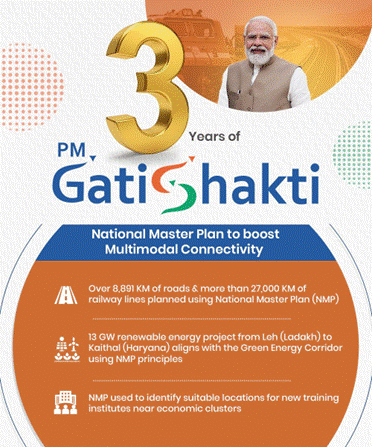
Training and Capacity Building
- Collaboration with Capacity Building Commission (CBC):
- Training modules are integrated with Central and Administrative Training Institutes.
- Methods: Workshops, and digital platforms for skill development in logistics.
State Logistics Plans (SLPs)
- State Participation:
- 26 States and Union Territories have aligned with the National Logistics Policy (NLP).
- Action: These states have notified their own State Logistics Policies to enhance focus on logistics in their public policies.
Unified Logistics Integrated Platform (ULIP)
- Platform Integration: ULIP integrates 33 logistics-related systems across 10 Ministries, promoting innovation in logistics.
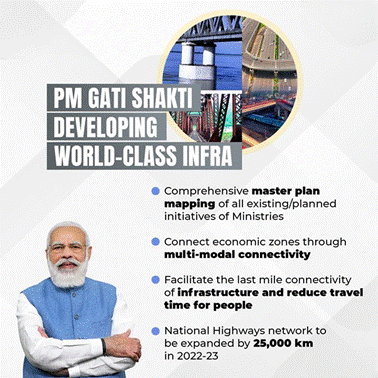
Private Sector Participation:
- Over 930 private companies are registered on ULIP.
- Features: ULIP integrates GST data for end-to-end cargo tracking, enabling seamless logistics management.
Logistics Data Bank (LDB)
- Purpose:
- LDB tracks and traces 100% of India’s containerized EXIM cargo.
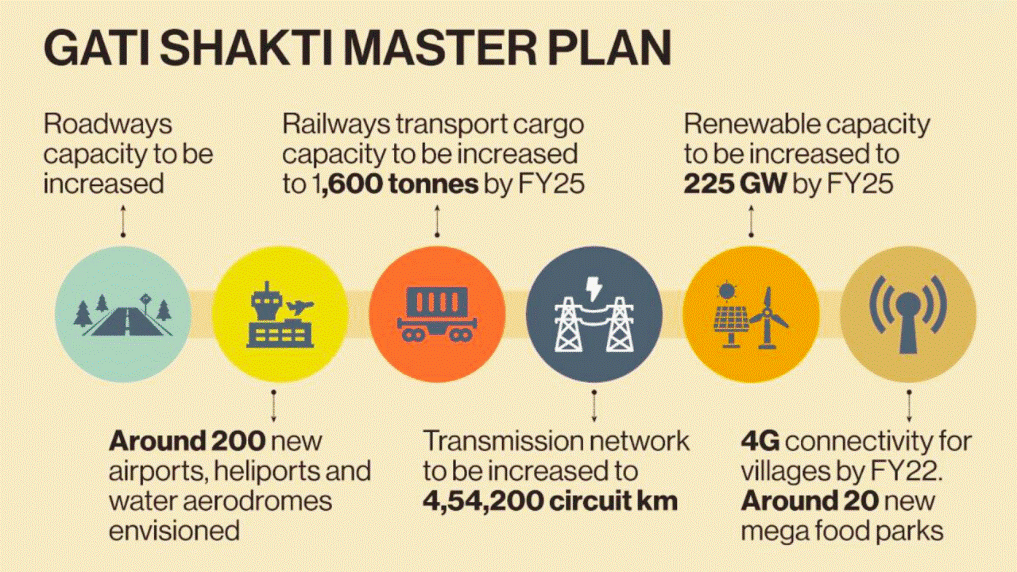
- Technology:
- Uses RFID technology combined with IoT, Big Data, and Cloud-based solutions.
- Provides real-time tracking of EXIM container movements.
- Features:
- Single-window logistics visualization solution using only container numbers.
- Tracks containers across Ports, Inland Container Depots (ICDs), Container Freight Stations (CFSs), Parking Plazas, Toll Plazas, and Railways.
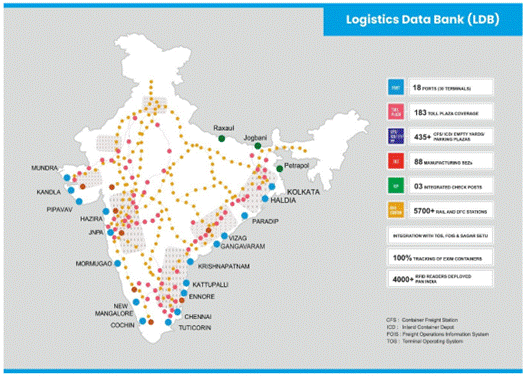
-------------------------------------


